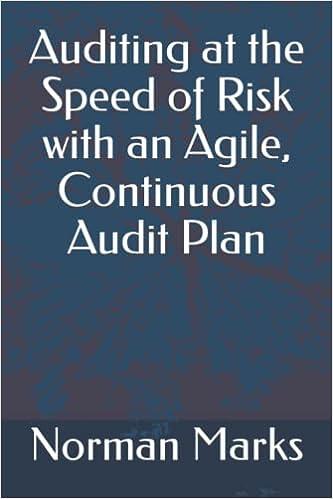Question
Judgment Case 17-1 (Static) Choose your retirement option [LO17-1, 17-3, 17-4, 17-5] Skip to question [The following information applies to the questions displayed below.] I
Judgment Case 17-1 (Static) Choose your retirement option [LO17-1, 17-3, 17-4, 17-5] Skip to question [The following information applies to the questions displayed below.] I only get one shot at this? you wonder aloud. Martina, human resources manager at Covington State University, has just explained that newly hired assistant professors must choose between two retirement plan options. Yes, Im afraid so, Martina concedes. But you do have a week to decide. Martina explanation was that your two alternatives are (1) the states defined benefit plan and (2) a defined contribution plan under which the university will contribute each year an amount equal to 8% of your salary. The defined benefit plan will provide annual retirement benefits determined by the following formula: 1.5% years of service salary at retirement. Its a good thing I studied pensions in my accounting program, you tell Martina. Now lets see. You say the state is currently assuming our salaries will rise about 3% a year, and the interest rate they use in their calculations is 6%? And, for someone my age, you say they assume Ill retire after 40 years and draw retirement pay for 20 years. Ill do some research and get back to you. Note: Use tables, Excel, or a financial calculator. (FV of $1, PV of $1, FVA of $1, PVA of $1, FVAD of $1 and PVAD of $1) Hint: The calculations are greatly simplified using an electronic spreadsheet such as Excel. There are many ways to set up the spreadsheet. One relatively easy way is to set up the first few rows with the formulas as shown below, then use the fill down function to fill in the remaining 38 rows, and use the Insert: Name: Define: function to name column B n. Since contributions are assumed made at the end of each year, there are 39 years remaining to maturity at the end of 2024. Note that multiplying each contribution by (1.06)n, where n equals the remaining number of years to retirement, calculates the future value of each contribution invested at 6% until retirement. End of Year Years to Retirement Salary Contribution Future Value at Retirement 2024 39 100,000 = C30.08 = D31.06^n =A3+1 = B31 = C31.03 = C40.08 = D41.06^n Judgment Case 17-1 (Static) Part 1 and Part 2 Required: 1. You were hired at the beginning of 2024 at a salary of $100,000. If you choose the state's defined benefit plan and projections hold true, what will be your annual retirement pay? What is the present value of your retirement annuity as of the anticipated retirement date (end of 2063)? 2. Suppose instead that you choose the defined contribution plan. Assuming that the rate of increase in salary is the same as the state assumes and that the rate of return on your retirement plan assets will be 6% compounded annually, what will be the future value of your plan assets as of the anticipated retirement date (end of 2063)? What will be your annual retirement pay (assuming continuing investment of remaining assets at 6%)?
| Annual retirement pay | |
| Present value of retirement annuity |
| Future value of plan assets | |
| Annual retirement pay |
Step by Step Solution
There are 3 Steps involved in it
Step: 1

Get Instant Access to Expert-Tailored Solutions
See step-by-step solutions with expert insights and AI powered tools for academic success
Step: 2

Step: 3

Ace Your Homework with AI
Get the answers you need in no time with our AI-driven, step-by-step assistance
Get Started


